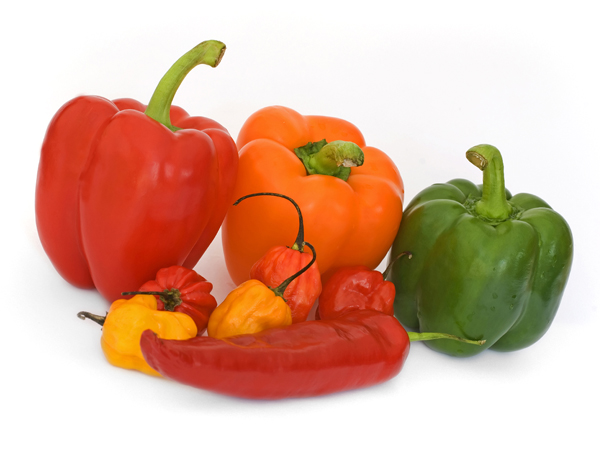 Fresh. Local. Seasonal.
Fresh. Local. Seasonal.
For Philadelphians, eating local means enjoying a late summer harvest of eggplants, tomatoes, cantaloupe, sweet corn, okra, beets, carrots, snap peas, turnips, potatoes and watermelon. Oh, and peppers.
Hot or crunchy-sweet, peppers come in a rainbow of colors—green, yellow, orange, red, purple and white. They’re considered a fruit because they grow on plants and contain seeds. Peppers love the heat of the summer sun and take about 70 days to harvest, reaching their peak of flavor and intensity by the month of September.
Bell Peppers
The big, plump bell pepper is the sweet result of a recessive gene in the pepper family DNA. It contains no capsaicin, a compound inherent in chile peppers that gives them that intense spicy heat. When choosing bell peppers at the market, look for ones that boast a deep, glossy sheen and feel heavy for their size. The rich color of these peppers is yet another indicator to go by—red is the ripest, followed by orange, yellow and, finally, green, which is an unripe (and thereby pungent and slightly bitter) bell pepper.
Eat these fruits raw or in salads, stuffed with rice, roasted with garlic and olive oil, or sautéed with onions and vegetables.
Chile Peppers
The chile pepper represents a large variety of capsaicin-sporting fruits that range from mildly hot to downright dangerous. Known for their flavor and complex intensity in dishes, chile peppers offer just about any level of heat preferred. Look for a poblano, cubanelle (also known as the banana pepper) or Anaheim pepper for a mild spice, or aim slightly higher with a jalapeño, serrano or Thai pepper. For those who want to play with fire, choose a Scotch bonnet or habanero.
Fresh hot peppers vary in color—the jalapeño is a deep, glossy green when ripe, whereas the Scotch bonnet sports a fiery red-orange. Most important to remember when selecting chile peppers is that they should be firm, glossy and deeply colored (green, yellow, orange or red). Also, the rule of thumb with hot peppers: the smaller, the hotter!
Use these peppers on the grill, roasted, pureed in marinades, or put in sandwiches, salads or pizza to liven up the taste!


